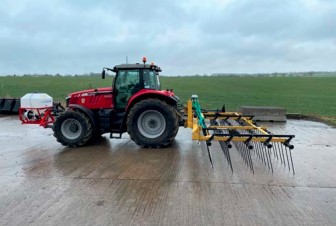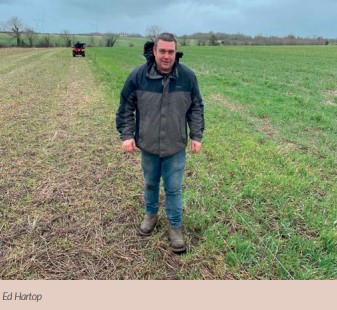At the beginning of February I was fortunate enough to attend the 2022 BASE-UK AGM. There were many excellent presentations, including the lecture from Dr Sam Cook on conservation biological control where she referred to the three P’s – Predation, Parasitism and Pathogens. It got me thinking about the next level of IMP that we have the opportunity to follow. At the same time as using less insecticides and more funding for habitat under mid-tier and ELMS schemes, identifying beneficial species and making decisions made on insect numbers (trapping) and crop risk is surely the direction we should work towards.

The one presentation that stood out was Professor Richard Bardgett’s session on soil fauna and its relationship with diversity of plant species. He talked about how ‘diversity of plants cultivate the soil micro-biome’ and the significance of this regarding complete functionality of the soil (including organic matter breakdown, physical structure and nutrient availability through the ‘microbial loop’).
Professor Bardgett suggested degraded arable soils can potentially be turned around in 2-3 years with this approach. Unfortunately, most of the cash crops we currently grow are monocultures, but there is great opportunity for plant diversity in catch and cover crops. A problem we have is a workload peak at harvest, at the time when cover crop establishment should ideally occur. Understanding that getting them in early is key, we are experimenting with a faster way to establish cover crops very soon after harvest. We have mounted a Techneat Avacast onto our Claydon straw harrow, with the hope to establish the cover crop and get the benefit of the straw harrow ‘cultivation’ effect on crop residue breakdown and slug egg destruction. The air seeder unit has several different metering cartridges to cope with the variation in seed shape, size and density. I see growing cover crops as an investment in our soils, and will endeavour to do this between every cash crop, if we have 6-8 week gap. A species mix with a diversity of physical root structure will be our aim.

Another winter project we have just embarked on involves taking soil organic carbon (SOC) measurements to get a handle on where we are, and to establish a baseline. I have been told, from people more knowledgeable than me, that this is a good idea for the future and allows you to track the effects of regenerative farming practices on your soil. We have started with one 24 ha field. We split the field into 5 zones according to soil texture and used two different sample depths. We have taken a GPS coordinate of each soil core, to allow repeatability every 5 – 10 years (with the help of CA Agricultural Services). We are using a measurement that includes organic and inorganic carbon, bulk density (to calculate quantity) and active carbon to see what is available to soil microbes. In the past, I have been sceptical of soil organic matter results (around 5.6%) on our high calcium soils, as artificially high. I hope these tests now available to the industry are more representative, and my method of sampling stands up to scrutiny over time.
As winter gives way to spring, the flying flock of sheep move on. They have been with us for the winter months, grazing our cover crops. This is the second year we have done this, and I would like to thank Ed Hartop (sheep grazier) for his diligence in moving them round according to our soil management plan. It struck me that the farm as a whole is better-off because of his presence with us, even though it is fleeting. Ed has a great knowledge of agriculture, which is different yet complementary to mine. We take a collaborative approach to problems and put plans into operation that are more likely to succeed. I hope to see more grazing animals on the farm by including 2 year species rich leys in the rotation and possibly grazing wheat in the future. This is just one example of more people being on our farm in general, since we followed a more regenerative ag path. I am all for that.
